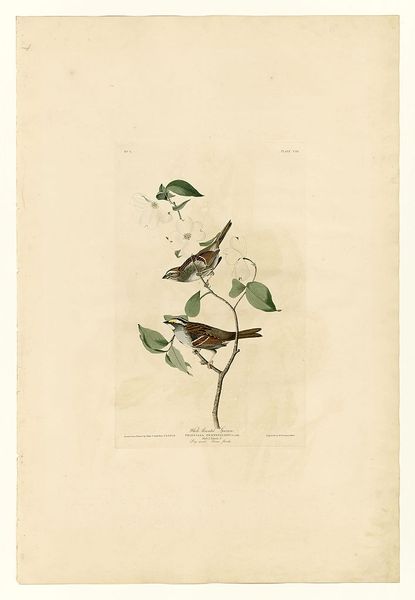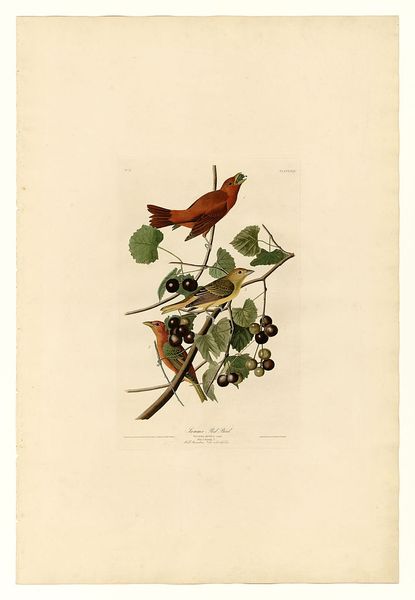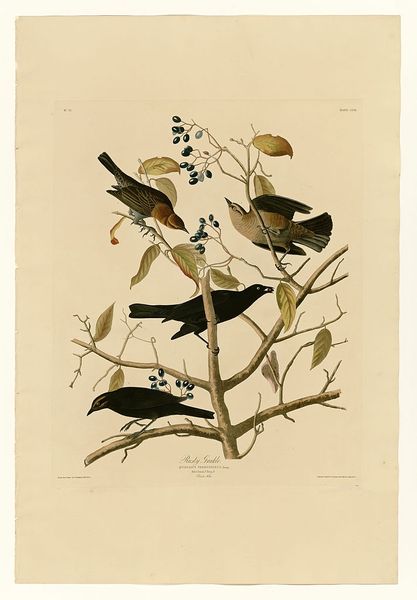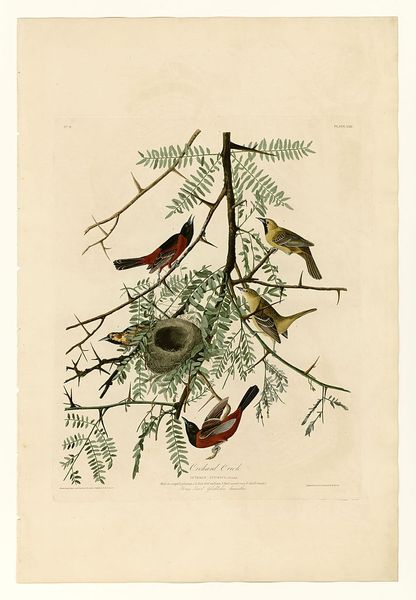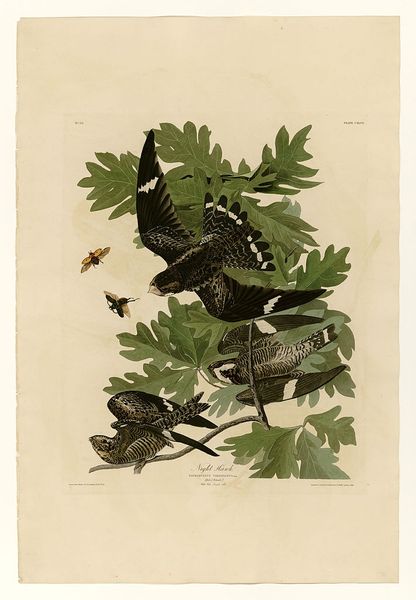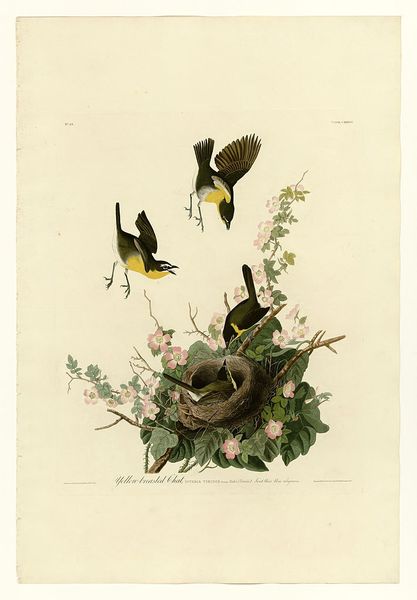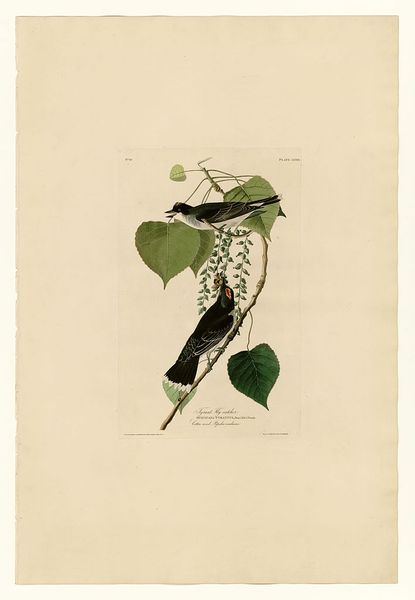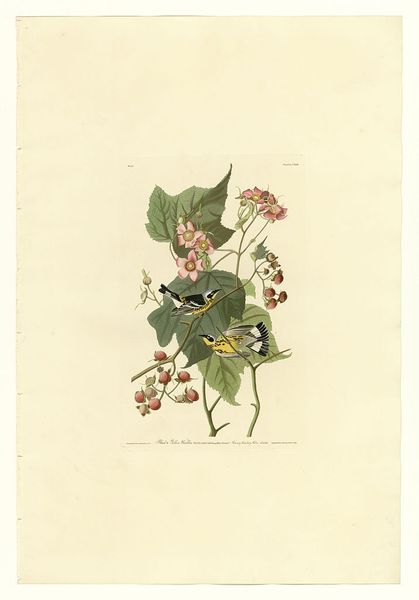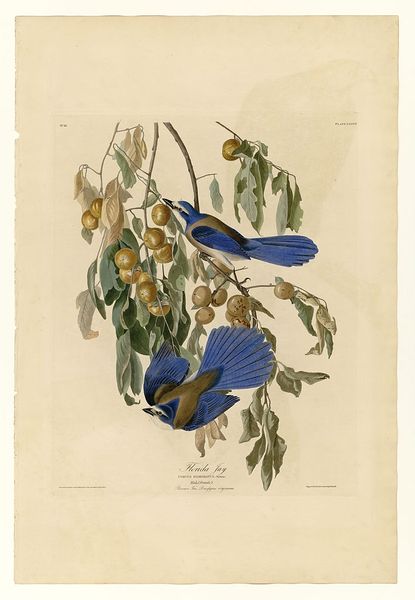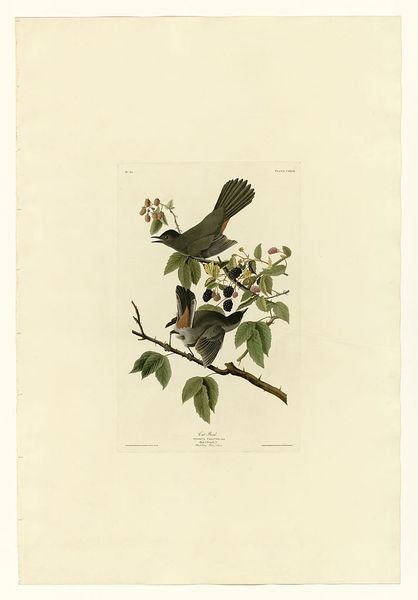
painting, plein-air, watercolor
#
painting
#
impressionism
#
plein-air
#
landscape
#
flower
#
leaf
#
watercolor
#
plant
#
watercolour illustration
#
botany
#
cartoon carciture
#
botanical art
#
watercolor
Copyright: Public domain
Curator: This lovely image before us is “Plate 12. Baltimore Oriole," by John James Audubon. Rendered with watercolor, it offers an intricate depiction of these birds amidst a backdrop of foliage and delicate blossoms. Editor: Oh, wow, isn't that vibrant? The way he captures the oriole’s energy – it's like catching a glimpse of pure joy, wouldn’t you agree? The detailing in the bird’s feathers is just so fine. Curator: Absolutely. Audubon’s work, although celebrated, can be understood within a historical context of colonialism and exploitation. While seemingly naturalistic, the image reflects an era where land was being charted and categorized through a Western lens. The representation of nature as passive and available for study has a direct impact on today's ecological crises. Editor: You’re so right. I hadn't thought about the… well, the power dynamic at play here. But even with that complicated layer, I'm drawn to the image, to the beauty he found and tried to capture. It reminds me of when I used to go birdwatching with my grandfather... Maybe beauty *can* coexist with critique. Curator: I think you are right. The delicate details of Audubon’s ornithological studies, like the carefully observed posture of the birds and their relationship to their environment, also underscores ideas around natural selection, behavior, and the very survival of the species in question, echoing Darwin's groundbreaking ideas on evolution. Editor: And look at that nest. So skillfully woven – almost like a little hanging sculpture. Imagine the instinct, the… artistry… it takes to create something like that. The illustration makes it look so serene, I can almost hear birdsong if I concentrate, and I can feel the textures just by looking at it. It makes you stop and remember nature, its intricacies and the urgent need to protect it. Curator: Indeed. By analyzing this illustration and other artistic interpretations of nature through intersectional frameworks, we begin to notice and question our inherited attitudes toward ecology. Looking closely encourages a heightened ecological awareness, connecting this work to broader contemporary issues of environmental justice. Editor: Wow. From joyful flight to colonial context to eco-awareness. You know, you have this way of turning art into a mirror that reflects everything. It makes you wonder… how much have we really changed our perspective over time? I really enjoyed contemplating that today. Curator: Thank you, likewise. Let’s remember to engage art not just for aesthetic pleasure but as a tool for social and ecological interrogation.
Comments
No comments
Be the first to comment and join the conversation on the ultimate creative platform.

